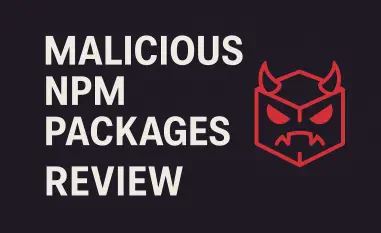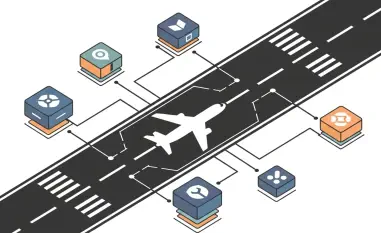In today’s fast-evolving digital landscape, enterprises are racing to modernize their applications to stay competitive. This modernization often involves implementing industry-standard protocols such as OpenID Connect (OIDC) and Security Assertion Markup Language (SAML) to enable single sign-on (SSO) for legacy applications through cloud-based identity providers. While such measures significantly enhance user experience, credential hygiene, and centralized authentication, they frequently fall short of addressing a critical aspect of application security: session management. Despite advancements in authentication, many modernization projects neglect the comprehensive session management required to ensure true security. Consequently, while front-door access may be secure, the subsequent application user journey remains precarious. The industry’s reliance solely on authentication protocols fails to account for how sessions are managed, maintained, and revoked, exposing enterprises to potential security vulnerabilities.
The Hidden Risks of Decentralized Session Management
Enterprises typically assume that identity providers will manage session activity effectively, but this assumption can be misleading. In most cases, applications handle sessions based on what their native frameworks offer. For instance, a Java application might use Spring Security, while a JavaScript application could rely on Node.js middleware. Even among applications using the same programming language, session configurations can vary significantly, especially in organizations with diverse development teams or those that have absorbed different companies. This lack of uniformity exposes enterprises to substantial risk factors, including inconsistent session timeout policies, outdated software patches, and potential session revocation delays. Legacy applications, in particular, suffer when originally developed teams no longer exist, leading to fragmented or unclear session management strategies.
Moreover, decentralized session logic often results in gaps that are not readily visible to security teams, who might incorrectly believe their authentication protocols provide complete control over session activity. This illusion of security can have significant consequences. Without continuous session verification returning to the identity system—which is often not enforced—enterprises expose themselves to potential exploitation. Additionally, outdated or inconsistent session handling practices can leave systems vulnerable to unauthorized access long after authentication has occurred, creating a false sense of security and potential exposure of sensitive data.
The Imperative for Centralized Control
The consensus is undeniable: reverting to outdated identity infrastructures is not the answer, but restoring centralized control over session management remains crucial. Tools like Web Access Management (WAM) systems of the past provided enterprises with controls over session behavior, enabling them to manage authentication, session revocation, and user directory integrations consistently. With centralized management, security teams could ensure that timeout policies cohered with security and compliance mandates, session revocation was immediate, and user activity was transparent across all applications. These capabilities are vital in a landscape where threats continuously evolve and the necessity for consistent and enforceable security measures is paramount.
Identity and Access Management (IAM) must be elevated to a shared service, a critical infrastructure akin to network routing or TLS protocols, and not an ad hoc solution within applications. Offering organizations immediate session revocation and consistent policy compliance across varied environments, centralized session oversight is essential. The enhancement in real-time integration with Continuous Access Evaluation Protocols (CAEP) and Zero Trust frameworks fosters a security environment where enterprises can better anticipate and mitigate risks proactively. These robust mechanisms ensure unified audit logging, preserving the integrity of identity-related activities and contributing to a holistic security architecture.
Evaluating Standards and Future Steps for CISOs
The modern landscape demands that identity systems seamlessly integrate across diverse cloud environments, necessitating standardization in session behavior. Standards such as SAML opened the gateway for secure SSO, yet left critical gaps not addressed by more recent protocols focusing on diverse session requirements. Notably, identity protocols have evolved to accommodate these gaps by introducing standards like SPML, AuthXML, and newer efforts like Identity Query Language (IDQL). As the need for secure interoperability across cloud infrastructures intensifies, consistent session management becomes imperative to securing heterogeneous environments effectively.
To address these challenges, Chief Information Security Officers (CISOs) and identity architects must rethink their approach to modernization. Conducting thorough audits of session management procedures across applications will help identify inconsistencies that could compromise security. Centralizing session control—whether through centralized proxies, standardized software development kits, or an identity layer aware of service mesh dynamics—allows for greater oversight and efficiency. Integrating continuous evaluation and revocation mechanisms within the security infrastructure can help enterprises adapt to emerging threats by allowing dynamic adjustments based on risk signals. Furthermore, recognizing IAM as an indispensable component of infrastructure, rather than an optional add-on, ensures its resilience and rigor align with overall organizational security strategies.
Embracing Future Security Challenges
In the rapidly evolving digital sphere, companies are striving to modernize their applications to maintain a competitive edge. This modernization typically involves adopting protocols like OpenID Connect (OIDC) and Security Assertion Markup Language (SAML) for enabling single sign-on (SSO) with cloud-based identity providers for legacy applications. Such initiatives enhance user convenience, credential cleanliness, and centralized authentication, yet they often miss a vital component of security: session management. Although authentication methods have advanced, projects aiming at modernization often overlook the detailed session management crucial for genuine security. Thus, despite securing initial access, the subsequent navigation through applications by users remains fraught with risks. The industry’s sole focus on authentication standards fails to address session handling—management, oversight, and revocation—leaving enterprises open to security threats. This oversight can allow vulnerabilities that undermine efforts to secure digital interactions.













